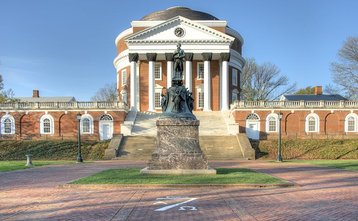The University of Virginia School of Engineering & Applied Science will establish a $27.5 million national research center, hoping to eliminate the bottleneck between memory storage and processors.
UVA’s Center for Research in Intelligent Storage and Processing in Memory (CRISP) will bring together academics from eight different universities to try and solve the ‘memory wall’ issue that has been present in computer systems for the past 70 years.
Tear down that wall
“Certain computations are just not feasible right now due to the huge amounts of data and the memory wall,” Kevin Skadron, chair of UVA Engineering’s Department of Computer Science and head of CRISP, said.
“One example is in medicine, where we can imagine mining massive data sets to look for new indicators of cancer. The scale of computation needed to make advances for health care and many other human endeavors, such as smart cities, autonomous transportation, and new astronomical discoveries, is not possible today.”
He added: “Our center will try to solve this problem by breaking down the memory-wall bottleneck and finally moving beyond the 70-year-old paradigm. This will enable entirely new computational capabilities, while also improving energy efficiency in everything from mobile devices to data centers.”
CRISP researchers will build computational capabilities into memory storage, pair processors with memory chips in 3D stacks, and examine how other aspects of computer systems will have to change when computer architecture is reinvented.
The research initiative is part of a larger, $200 million, five-year national program to advance microelectronics. The Joint University Microelectronics Program, managed by North Carolina-based Semiconductor Research Corporation, will fund centers led by six research universities: UVA, University of California at Santa Barbara, Carnegie Mellon University, Purdue University, the University of Michigan and the University of Notre Dame.
“The trifecta of academia, industry and government is a great model that benefits the country as a whole,” Skadron said.
“Close collaboration with industry and government agencies can help identify interesting and relevant problems that university researchers can help solve, and this close collaboration also helps accelerate the impact of the research.”

